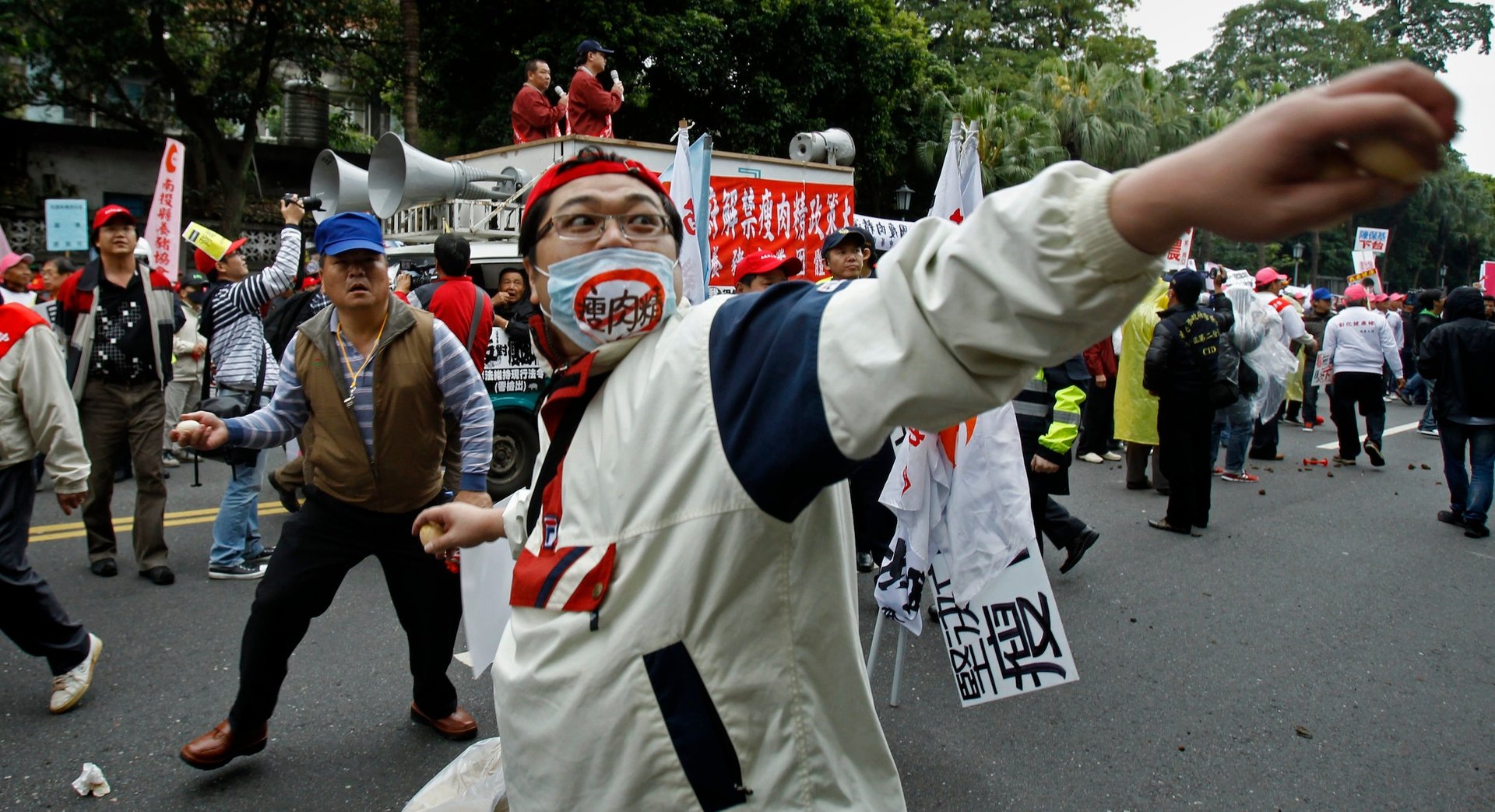Want to join America’s trade club? Better buy some beef
Last July, Taiwan lifted a ban on imports of American beef containing a controversial growth hormone called ractopamine. Food safety is such an emotive issue in Taiwan that opposition to US beef imports sparked raucous protests in a society that tends towards Confucian decorum. On one occasion, farmers rioting in the capital, Taipei, threw pig excrement and rotten eggs at police.


Last July, Taiwan lifted a ban on imports of American beef containing a controversial growth hormone called ractopamine. Food safety is such an emotive issue in Taiwan that opposition to US beef imports sparked raucous protests in a society that tends towards Confucian decorum. On one occasion, farmers rioting in the capital, Taipei, threw pig excrement and rotten eggs at police.
The Japanese government has just taken a similarly unpopular step, lifting a decade-old restriction on imports of US cows over 20 months of age that had been in place because of concerns over bovine spongiform encephalopathy, or “mad-cow disease.”
These East Asian governments are not responding to a suddenly huge public appetite for steak dinners. Compared with North Americans, the Japanese and Taiwanese eat little beef anyway (see table below). The big issue is trade. Washington has successfully persuaded Taipei and Tokyo that their chances of striking lucrative trade partnerships with the US hinge partly on their lifting what the American beef lobby calls (pdf, p.3) ”non-science-based” import restrictions.
Japanese consumers have a lingering distrust of US beef, following a safety scandal in 2006 and despite a massive PR campaign by the American cattle industry that included recruiting “American Beef Ambassadors” from the Japanese public to say good things about the meat on Twitter.
South Koreans, too, get emotional about American cows. Seoul bans imports of US cattle over 30 months old over fears of mad-cow disease. And last April, when a single case of the disease was discovered in California, Koreans protested in an attempt to ban all American beef. That harked back to a case of mass hysteria over US beef imports in 2008, when police used tear gas to break up violent riots.
Japan’s possible goal in opening up to American cattle imports is to get a smooth entry into the “Trans-Pacific Partnership” (TPP), a free trade bloc proposed by Washington and involving the US, Canada and several Asian nations that could be 40% larger than the EU.
The next round of talks about forming the TPP, which Japan has said it wants to join, start next month. And in the run-up, beef has been very firmly on the discussion menu between Washington and Japan. In fact, it was one of three issues (pdf p. 2) identified by the Obama administration as crucial for Japan to get America’s support to enter the TPP.
South Korea, meanwhile, is lukewarm on the TPP but did embark on a free-trade agreement with the US last March. American trade officials are now pushing for unfettered access to the nation’s beef market under that agreement, while hinting a fresh deal on cattle could smooth Seoul’s path into the TPP should it wish to join.
Taiwan relaxed restrictions on ractopamine-laced beef in the hope of broadening economic relations with the US under a long-stalled scheme known as the Taiwan-US Trade and Investment Framework Agreement. The US needs to be careful about co-operating too much with Taiwan for fear of offending the Beijing government, which insists that the self-governed island is part of China. Nonetheless, since allowing US beef onto supermarket shelves, Taipei has earned some welcome noises from Washington that TIFA talks may resume soon.
Annual beef and veal consumption, per capita
Source: USDA (2011 figures)